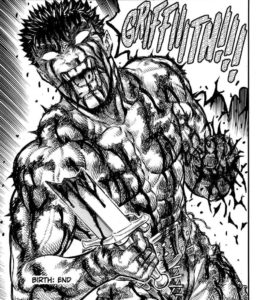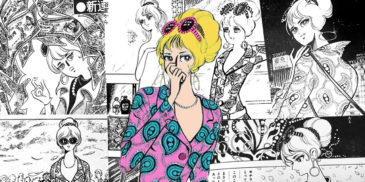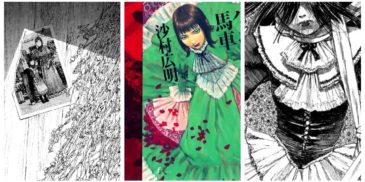
Japan and the West have a long history of fruitful cultural exchange, which has birthed some of the most iconic media franchises. Star Wars, Resident Evil, Silent Hill, and The Matrix are all the result of these two societies being inspired by one another. There are, however, cases where a piece of media has had far-reaching influence while remaining generally unknown by wider audiences.
Berserk, a dark fantasy manga first published in 1989, made iconic the trope of the grim protagonist who wields a sword bigger than themselves while fighting monsters bigger still. Undoubtedly one of the most influential manga of all time, while retaining an underground cult status, it was furthermore greatly inspired by Western culture, particularly in its brilliant horror aspects. Series creator, writer, and artist, Kentaro Miura, who sadly passed away in 2021, took inspiration from many sources and twisted them into some frighteningly original content. So, let us now delve into the manifold horror of Berserk.

A brief rundown of the plot, as quickly as one can summarize a 32-year-long series: Berserk follows the cursed life of a mercenary named Guts, from his birth from the hanging corpse of his mother, to his training as a child soldier, and to his eventual meeting with a warrior named Griffith, who leads the group of sellswords called the Band of the Hawk. However, when tragedy strikes, they are all forced to confront the existence of demonic, godlike beings who feed upon humanity. After witnessing his compatriots slaughtered cruelly in a massive sacrificial ritual to appease these evil beings, Guts vows revenge and goes on a mission to slay these monsters, against all odds.
A staple of the series is the hideous monsters that the protagonist, Guts, must face, the most important being the Godhand and their underlings, called Apostles. The Godhand are described by some as angels, but in the bleak world, our story takes place in, their intentions and actions are far from benevolent. Much like the Cenobites of Clive Barker’s Hellraiser, they hold a semblance of their former human shape, but their limbs are distorted, their faces disfigured, and they seem intermixed with creatures like bats and mollusks. Void, the leader, has a skinless face, with eyes sewn shut, and sharp claws for hands.
The Apostles also once were human, but at their lowest point, they find a talisman known as a Behelit, and the Godhand appear to compel the individual to make a sacrifice in order to be reborn as a demon. They take many forms, which seem to be influenced by their psyche: Rosine, a girl who wished to escape to the realm of elves, morphs into a grotesque union of a luna moth and an elf, while Grunbeld, a powerful warrior with vile tendencies, becomes a dragon with crystalline scales.
The story also takes us through several hellscapes. There is an underground pocket dimension called Qliphoth, where beastly trolls and insectoid monsters dwell. Perhaps the most important event in the series is the Eclipse Ceremony, when the Godhand descend, changing the landscape around them. Where once there was earth, there are now countless red, screaming faces. The sky is darkened, and the Apostles gather to devour sacrifices.

Another hellscape exists as a nightmare within the mind of the traumatized heroine, Casca. It is a wasteland, constantly overcast by the eclipse which occurred during the moment her sanity was shattered. There are bat-like demons that attack, reminiscent of the appearance of the Godhand member who perpetrated her trauma. The design of these unearthly realms recalls the artwork of H. R. Giger, who famously designed the world of the film Alien. His work intermingles the human form with machinery, animals, and monsters, frequently with frozen expressions of torment upon their distorted faces.
Having read this far, you’ve probably gleaned that Berserk, with its corruption of humanity and godlike entities with no empathy for humanity, has a distinct cosmic horror streak. The genre was popularized through the writings of H. P. Lovecraft, who wrote of creatures to whom mankind are like ants, and whose very concept instills madness in those unlucky enough to witness them. He also wrote about a realm called the Dreamlands, a world humans can only visit in their sleep, which is occupied by both the wondrous and the malignant; armies of cats who live on the moon, and amphibious monsters that rise to the surface at night to drink blood.
The real terror of cosmic horror is that we as a species are but a blip in the vastness of time and space, affected by forces outside our control. Berserk takes this concept, explores it, and yet challenges it with the hero Guts, who continuously survives despite the course of destiny, fighting against the tide of causality with sheer willpower.

Berserk is a tale like no other. It dabbles in tropes like the lone, taciturn samurai who comes to town to stop a villain terrorizing the populace, or like the white knight who saves the princess in the tower and becomes king, and then the story subverts its clichés. The characters discuss philosophy, struggle with trauma, and change from their experiences. In this world, nothing is what it seems: The white knight is an inhuman monster, the fairies eat human flesh, and the black-clad brute who fights like a mad dog is the only one who cares enough to save you.
While it has not reached the level of mainstream fame as the works inspired by it, its legacy is evident. We see it in the video games Dark Souls and Final Fantasy, and even the blockbuster Avengers: Endgame recreated some iconic imagery from the series. If you have never read this series, I encourage you to do so, for it is an experience like no other, which will leave you changed.
More Manga Reviews
There is something about bad media that can be extremely attractive in some cases. Why The Room is still revered while The Exorcist II is panned? This fine line between… Junji Ito’s at it again with the suicide-filled creepfest that is the Lovesickness collection, and like all of his work, it is worthy of a manga review. Taking its name… Still receiving new adaptations to this very day, it is safe to say that Monkey Punch’s seminal manga Lupin III is one of the most enduring properties in the world… Always on the prowl for new horror manga to check out, you sometimes have to browse off the beaten path. Randomly looking into titles lead me to Man Eater by… Ero-guro manga is often known for telling stories in the bleakest way possible. Among all the blood, violence, and adult content, it is hard to find any hope for the… Jungle Juice Vol. 1 is a sci-fi fantasy manhwa, written by Hyeong Eun and illustrated by Juder. Hyeong Eun has worked as a writer on the webcomic 100 (2020-23), whereas…Dokumushi (2013) Manga Review- A Rare Case of Charming Mediocrity
Junji Ito Lovesickness Manga Collection Review
Mona Lisa Okyo (1970) Manga Review – The Female Lupin III
Man Eater Manga Review – Yosuke Takahasi’s Deadly Obsessions
Bradherley’s Coach (2005) Manga Review: Where Dreams Go to Die
Jungle Juice Volume 1 Manhwa Review – A Bugs Life
Eden is a Soong-type android learning to pass as human through studies of pop culture, humor, and dark fantasy. Perhaps one day she will learn to love and pronounce “hyoo-mahn” correctly. She was written analyses of music, video games, comics, and film. You can find her other writings on Vocal and WordPress.





